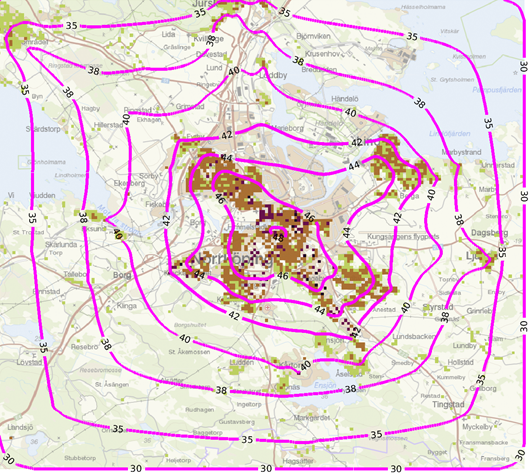Understanding how multiple drone operations impact urban airspace capacity levels is a key objective of research from Swedish Air Navigation Service provider LFV, the Department of Science and Technology of Linköping University (LiU) and the University of California, Berkeley.
The UTMOK project seeks to understand the role of volume, noise and spectrum considerations in airspace demand/capacity balancing. Researchers are developing methods to estimate capacity thresholds for drone traffic in very low level (VLL) uncontrolled urban airspace, and apply their algorithms to Norrkoping municipality in Sweden (the LiU home area) and Bay Area in the US (Berkeley’s home). UTMOK researchers are testing higher autonomy and automation levels in UTM by suggesting distributed traffic management schemes. The project is helping bridge the worlds of regulators and industry by providing policy makers with decision support tools to quantify technological requirements which the manufacturers must follow to ensure seamless operations.
In an spin-off project, LFV and LiU will pave the way for establishing performance based navigation (PBN) in UTM by designing algorithms for smart geo-fencing (maintaining and updating efficient representations for the multitude of airspace constraints imposed by owners, users, authorities, et al) and deciding locations of vertiports/vertistops for drone taxis. These identify optimal locations where higher-flight-level VTOL traffic may cut through the lower layers while minimally disrupting traffic in the layers.
Development of PBN for UTM, to adopt different regulations in different areas, is a core airspace integration solution, as different airspaces may require different capabilities. In today’s air traffic management (ATM) environment PBN has to fit into the existing well evolved system, which is a sometimes painful process. To avoid the same type of retrofitting complications in UTM, it is crucial to be proactive and establish PBN for UTM as early as possible.
The Swedish Transport Administration is funding the UTMOK work and the related UTM 50 research programme, which deals with visualization and interaction challenges related to drone traffic in urban areas; UTM OK focuses on routes and evaluation of airspace capacity. Project reference groups include local regulators and drone manufacturers, as well as air traffic controllers.
(Image: Noise footprint over Norrkoping municipality, overlaid with the population density grid)




